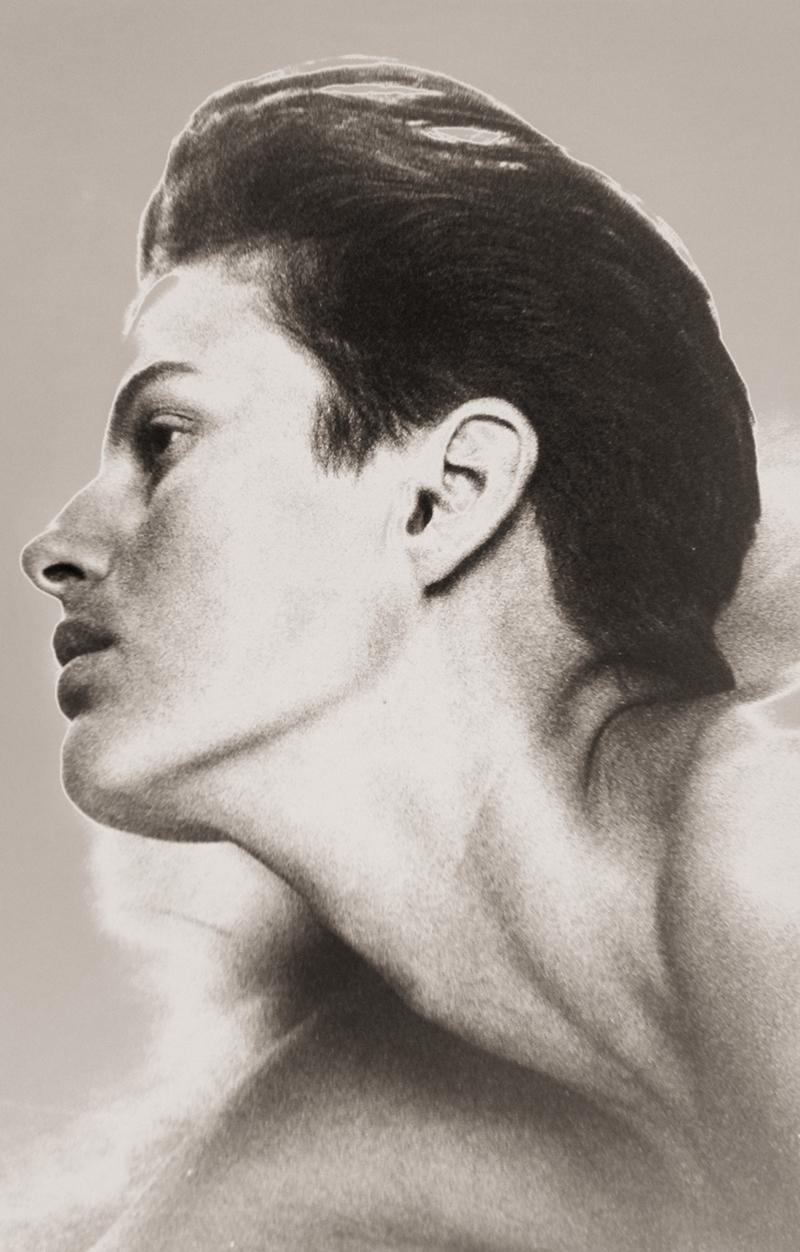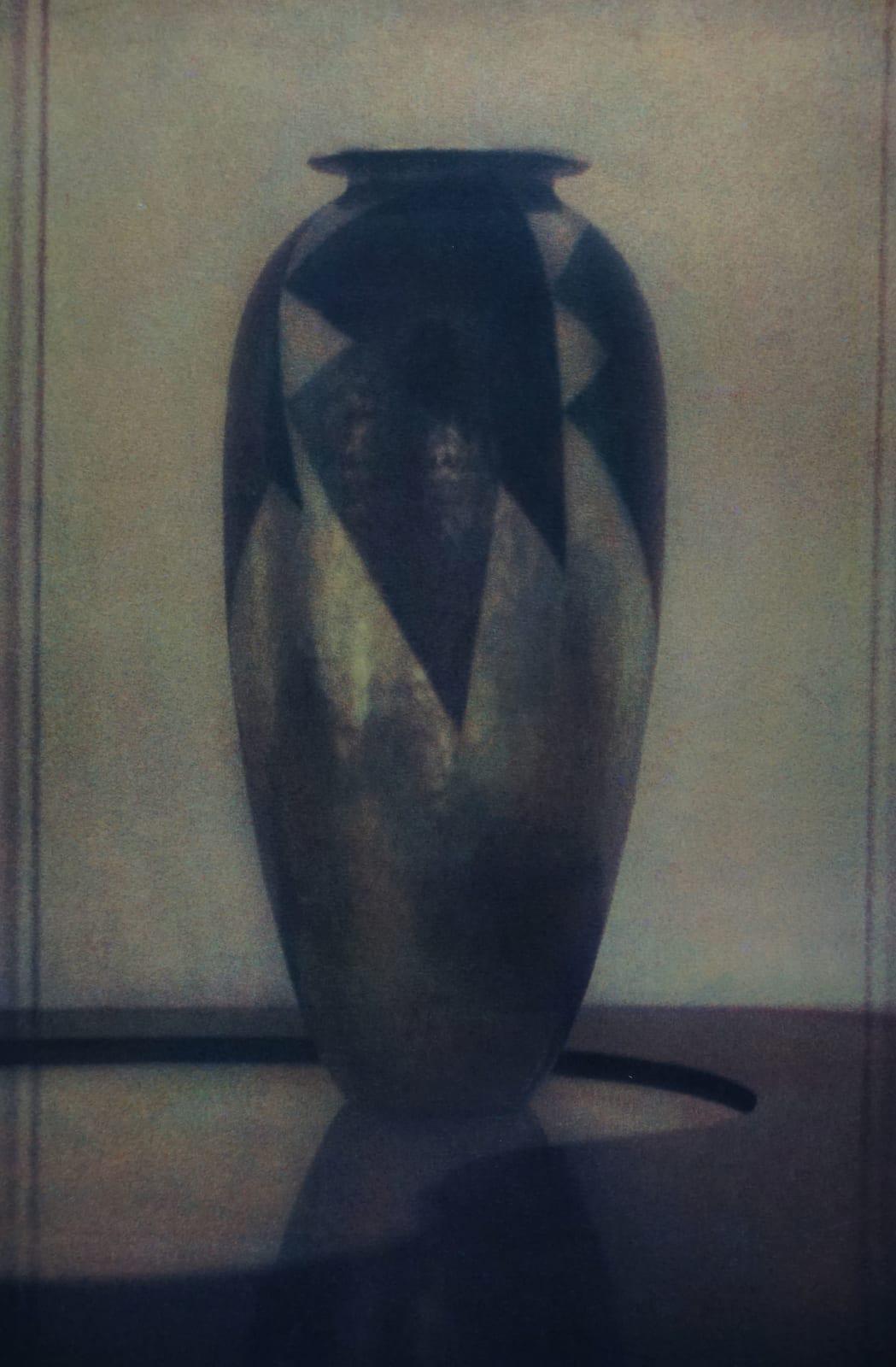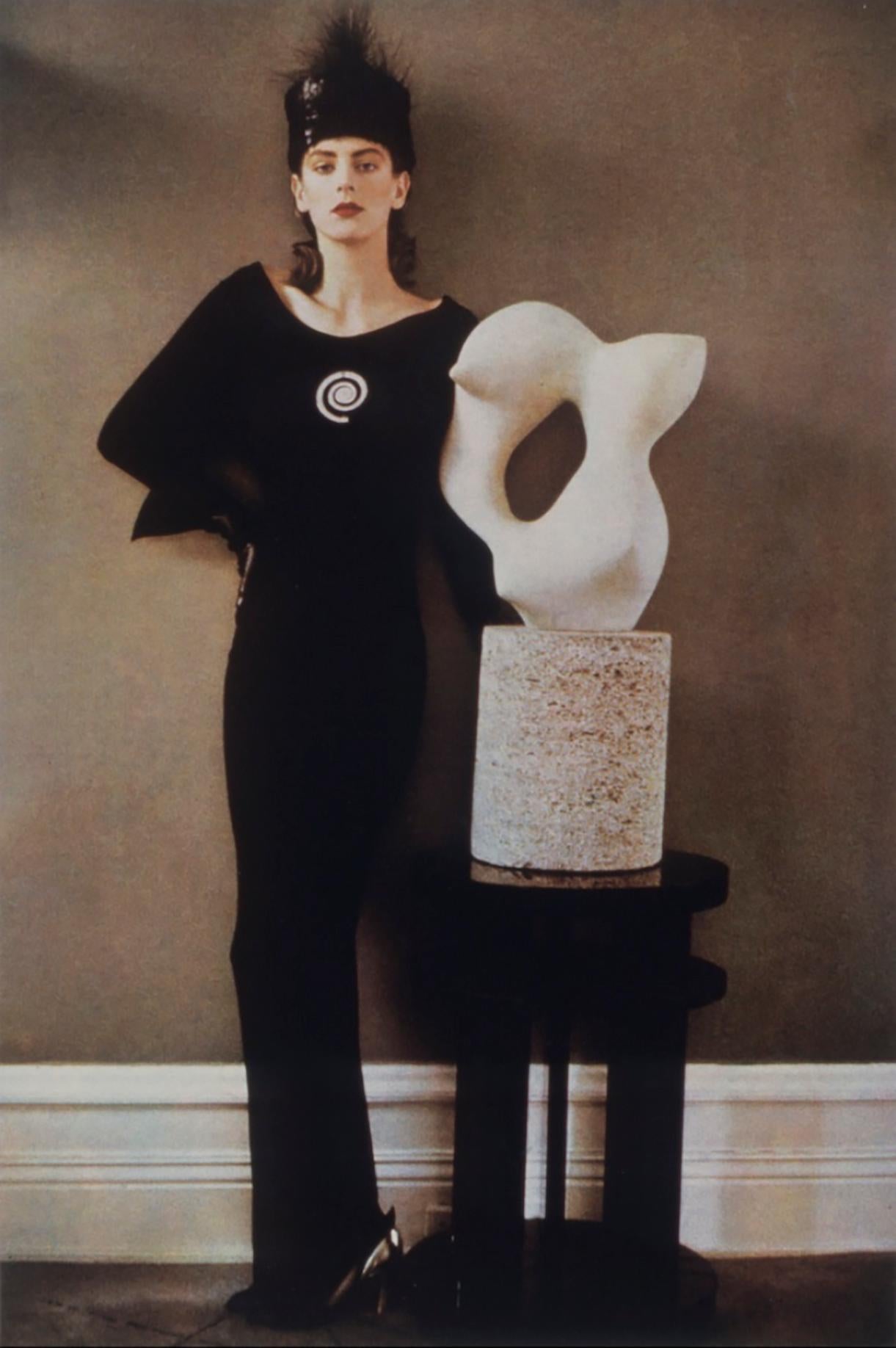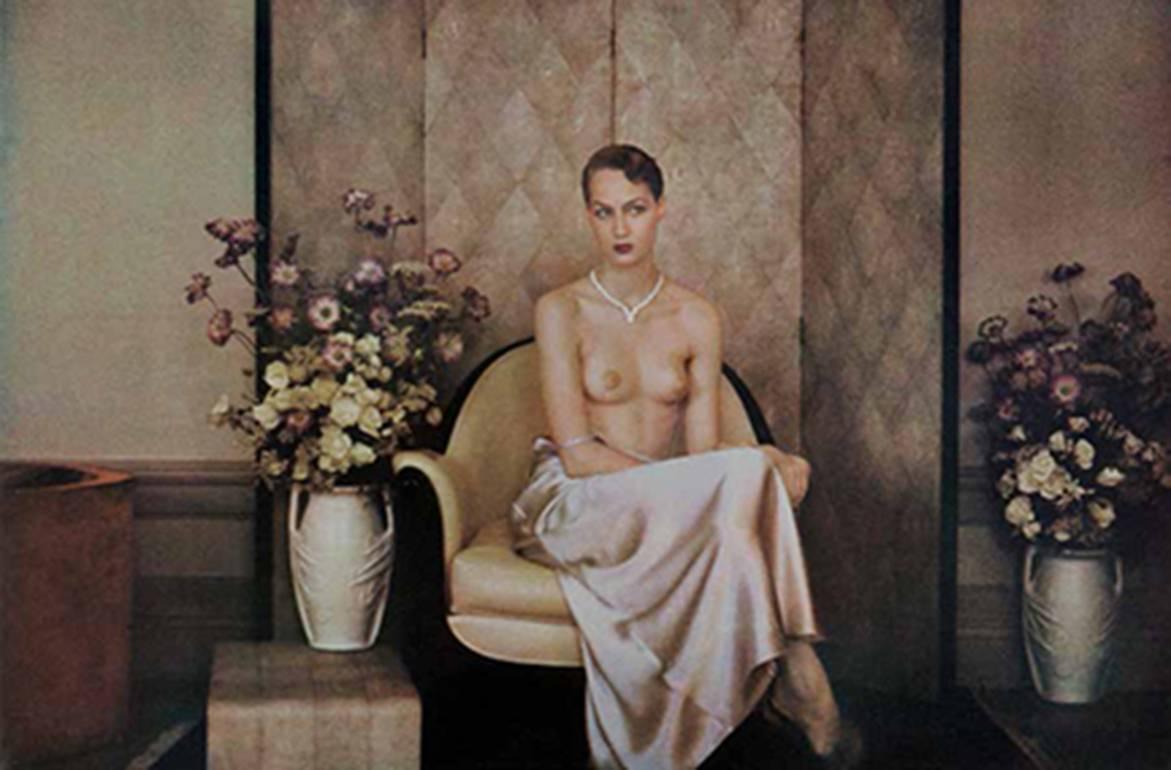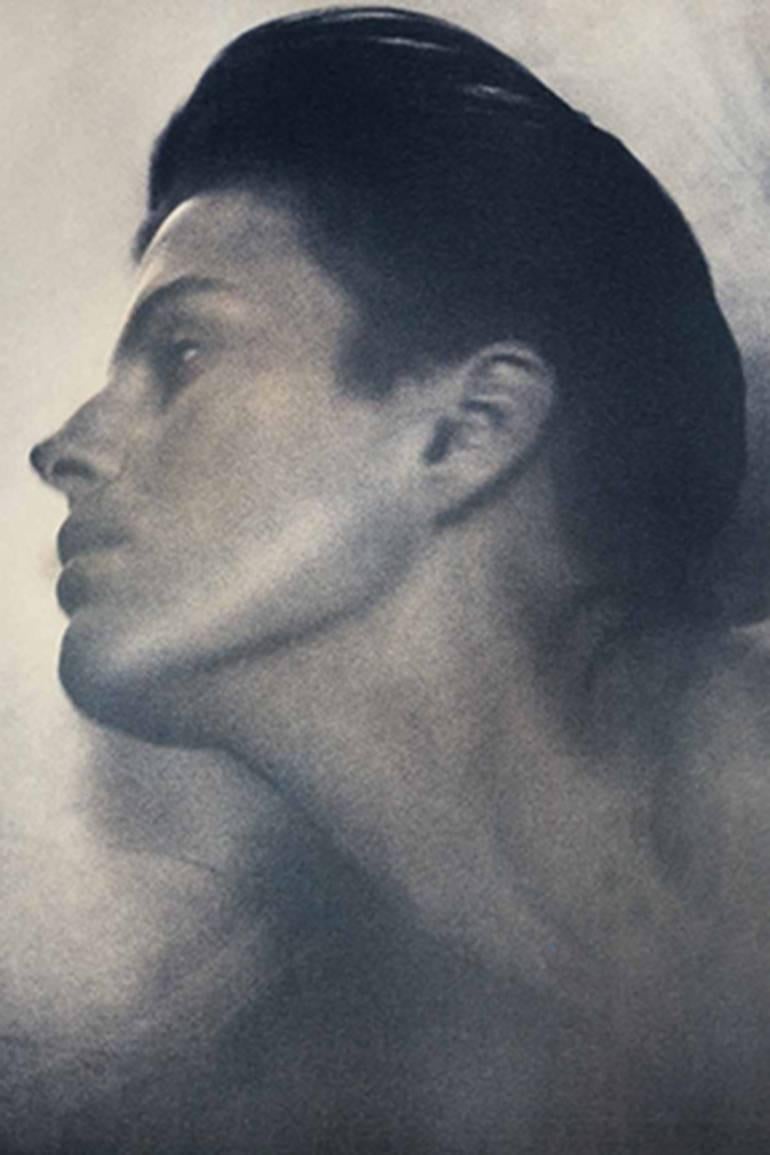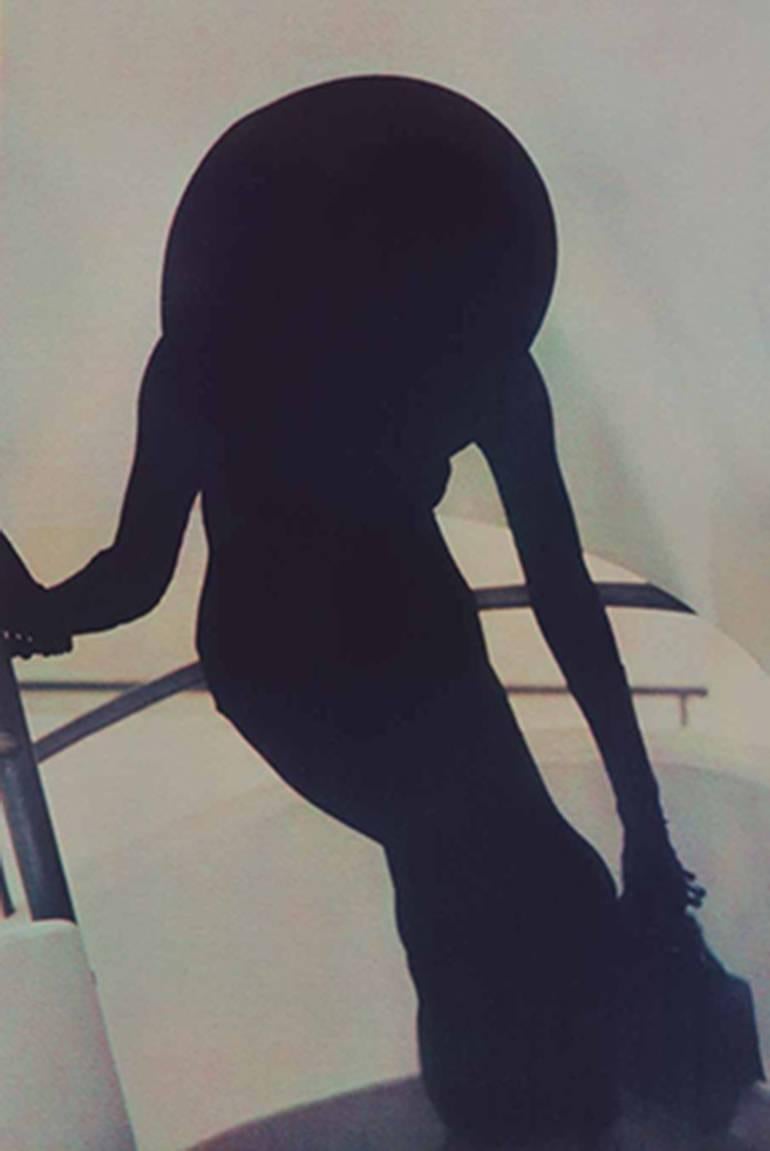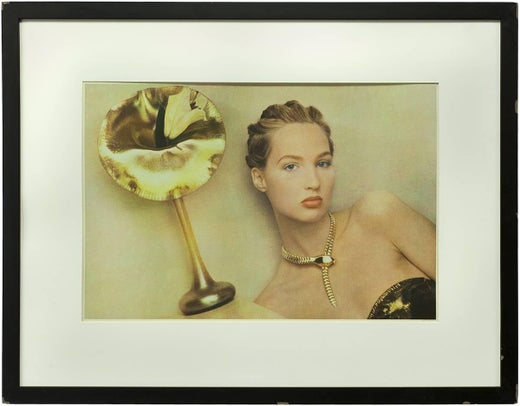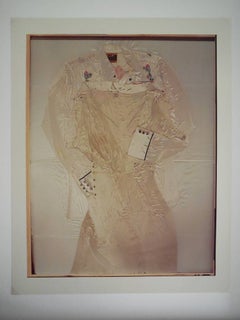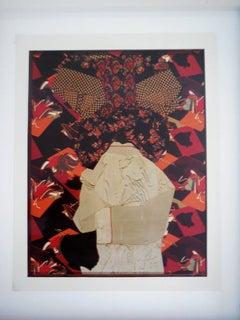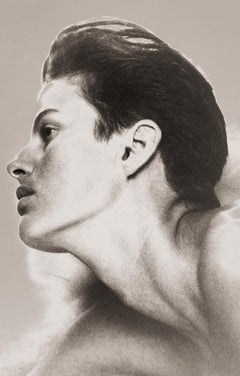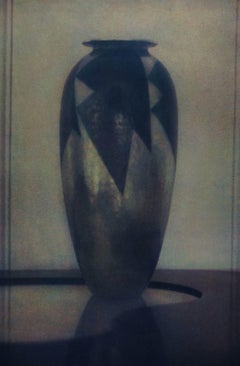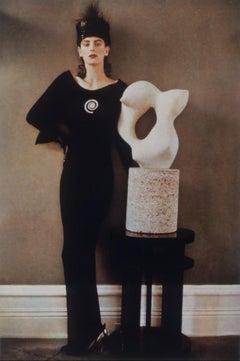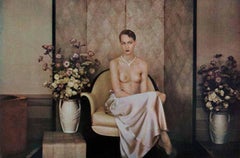Items Similar to Rebecca, Tiffany Vase, Large Scale Sheila Metzner Photograph
Want more images or videos?
Request additional images or videos from the seller
1 of 6
Sheila MetznerRebecca, Tiffany Vase, Large Scale Sheila Metzner Photograph1987
1987
$4,500
£3,455.57
€3,964.08
CA$6,323.03
A$7,081.39
CHF 3,694.95
MX$86,496.16
NOK 47,010.57
SEK 44,313.10
DKK 29,583.45
About the Item
Sheila Metzner’s unique photographic style has positioned her as a contemporary master in the worlds of fine art, fashion, portraiture, still life and landscape photography. Looking at Metzner’s photographs is a captivating experience. Innocent, sensual, and sexual, each photo, regardless of subject, exhibits and elicits deep emotion. It is nearly impossible to just glance at Metzner’s photos; they beg to be studied. She says, “Photography in its most basic form is magic…This image, caught in my trap, my box of darkness, can live. It is eternal, immortal. The child in the image will not age as the living child will.”
Sheila Schwartz was born in 1939 to an orthodox Jewish family in a poor section of Brooklyn. While attending the School of Industrial Art in Manhattan (now the High School of Art and Design), she was awarded the Mayor Robert F. Wagner scholarship to the college of her choice. She chose Pratt Institute, where she majored in visual communication. Her fondness for painting and sculpture also led her to study with abstract artists Jack Tworkov and James Brooks.
After graduating in 1961, Sheila worked as an assistant to Lou Dorfsman at CBS Network Advertising. Five years later, she was hired by the Doyle Dane Bernbach advertising agency as its first female art director, and in 1968 she met and married director, creative director, and painter Jeffrey Metzner. While pregnant with their first child, she was riding in a cab with her mentor and friend, photographer Aaron Rose, discussing whether or not to give up her career in advertising. “He said, ‘You should be a photographer. You live like an artist. You have a good eye, you’d be good at it.’ ”
Metzner started taking pictures, amassing them slowly over the next 13 years, while raising her and Jeffrey’s five children—Raven, Bega, Ruby, Stella and Louie. Jeffrey’s two daughters from a previous marriage, Evyan and Alison, were also a regular part of the family. “When they were really small, I’d be with them during the day, photographing and printing at night. At eight or nine in the evening, when they were all asleep, I’d take a shower to wake up and put on high heels and lipstick, which I wore then, to give me the feeling of being ready to work.” She continues, “My children never interfered. When I couldn’t travel because of them, I would find a place in upstate New York and call it Antarctica or Egypt. I found microcosms.”
Nine years later, Metzner had accumulated a box of 22 pictures. One of them, a black-and-white photograph titled “Evyan, Kinderhook Creek,” caught the eye of John Szarkowski at the Museum of Modern Art, which he included in his famous and controversial exhibition “Mirrors and Windows: American Photography since 1960.” The New York Times art critic Hilton Kramer loved the picture and soon it became the dark-horse hit of the exhibition. Later that year, Metzner’s first solo show at the Daniel Wolf Gallery in New York drew record crowds.
Metzner was now ready to work in color, but not just conventional color. Of her subjects, she once said, “If I use a rose, I want it to be the essential rose—the rose Beauty brought to her father from the Beast’s garden.” Now she aspired to an essential kind of color. “I wanted something that would last. I was looking for Fresson even though I didn’t know they existed.”
The Fresson family works outside of Paris and specializes in a labor-intensive four-color “process de charbon” method, which they invented in 1895. Some prints can go up to seven colors, and are pigment prints, the only true archival color print. Metzner is one of just ten American photographers with whom they are willing to work. Fresson prints are the perfect complement to Metzner’s style—soft, sensuous, and grainy, the prints resemble paintings, with a finish which Metzner describes as “a glaze on fine porcelain. The moment I saw the neutral gray,” she adds, “I knew it was perfect.”
In 1980 Metzner showed her Fresson color prints at her second solo exhibition at the Daniel Wolf Gallery. This show led to commissioned editorial work for such magazines as Vanity Fair, Vogue, and Rolling Stone. She secured an exclusive contract with Vogue for the next eight years. Metzner considers her portrait of actress Jeanne Moreau for Vanity Fair a turning point in her career. “It gave me a chance to show my work to a broader audience. I wasn’t just producing photographs for the art world.”
Of Sheila’s foray into fashion, critic Carol Squiers says, “At a time when fashion photography was caught between sterility and the snapshot, Metzner created a sumptuous vision that stimulated the entire field.”
Metzner also started doing commercial photography around this time. Her first client was Valentino, soon to be followed by Bloomingdale’s, Perry Ellis, Revlon, Shiseido, Saks Fifth Avenue, Paloma Picasso, Victoria’s Secret, Levi’s, Ralph Lauren, and fragrances for Chloe and Fendi (the Fendi campaign won a Fragrance Foundation Recognition Award). Her work also appeared on John Mellencamp CDs and international book jackets, and she began doing extensive travel and landscape photography.
Metzner has also worked on special assignment for films including Wild at Heart, Black Rain, Jennifer 8, and Bugsy. She has done photography for John Huston, Jessica Lange, Warren Beatty, Uma Thurman, Isabella Rosselini and many others. Metzner has directed television commercials, and produced and directed her own short film on the artist Man Ray. She’s also published two monographs: Objects of Desire, which won the American Society of Magazine Photographers Ansel Adams Award for Book Photography, and Sheila Metzner’s Color. Her work has been featured in numerous books on photography as well. Metzner’s first American museum exhibition, “Sheila Metzner 1991: A Retrospective” was held at ICP.
Metzner’s photographs are included in the collections of The Metropolitan Museum of Art, The Museum of Modern Art, The International Center of Photography, The Museum of Fine Arts in Houston, The Chrysler Museum, Agfa and Polaroid Corporations, Saks Fifth Avenue, Avon, and the Norton as well as many personal collections.
Says Metzner, “When I started photographing, I was told that photography was dead and that I was really foolish to involve myself in it. I thought, ‘It can’t be dead, because I’m alive.’ Photography has made my life a most extraordinary one.”
- Creator:Sheila Metzner (1939, American)
- Creation Year:1987
- Dimensions:Height: 28 in (71.12 cm)Width: 36 in (91.44 cm)
- Medium:
- Movement & Style:
- Period:
- Condition:needs to be reframed.
- Gallery Location:Surfside, FL
- Reference Number:Seller: 10451stDibs: LU38212174652
Sheila Metzner
Sheila Metzner (born 1939) is an American photographer. She was the first female photographer to collaborate with the Vogue magazine on an ongoing basis. Metzner lives in Brooklyn, New York. Metzner graduated from the High School of Art and Design and the Faculty of Visual Communications of the Pratt Institute. In the 1960s, she became the first woman to be promoted to art director by Doyle Dane Bernbach, an advertising agency. Thanks to this, she successfully collaborated with well-known photographers, including Richard Avedon, Melvin Sokolsky, Bob Richardson and Diane Arbus. Her first show in New York was called Friends & Family. She decided to show part of the images to the director of the Museum of Modern Art in New York, John Sarkovsky. In 1978, he bought one and included in MoMA exhibition Mirrors and Windows: American Photography Since 1960. A second exhibition – Photography (Spring 1981): Couches, Diamonds and Pie – took place there. After that, The New York Times and The Sunday Times published a photograph of Sheila's husband. In 2008 the School of Visual Arts presented the exhibition Time Line: Shelia Metzner at the Visual Arts Museum, New York.
About the Seller
4.9
Platinum Seller
Premium sellers with a 4.7+ rating and 24-hour response times
Established in 1995
1stDibs seller since 2014
1,788 sales on 1stDibs
Typical response time: <1 hour
- ShippingRetrieving quote...Shipping from: Surfside, FL
- Return Policy
Authenticity Guarantee
In the unlikely event there’s an issue with an item’s authenticity, contact us within 1 year for a full refund. DetailsMoney-Back Guarantee
If your item is not as described, is damaged in transit, or does not arrive, contact us within 7 days for a full refund. Details24-Hour Cancellation
You have a 24-hour grace period in which to reconsider your purchase, with no questions asked.Vetted Professional Sellers
Our world-class sellers must adhere to strict standards for service and quality, maintaining the integrity of our listings.Price-Match Guarantee
If you find that a seller listed the same item for a lower price elsewhere, we’ll match it.Trusted Global Delivery
Our best-in-class carrier network provides specialized shipping options worldwide, including custom delivery.More From This Seller
View AllRare Large Harry Bowers Vintage C Print Photograph Ten Photographs Fashion Photo
By Harry Bowers
Located in Surfside, FL
HARRY BOWERS
T E N P H O T O G R A P H S
I DON'T LOOK FOR PHOTOGRAPHS I INVENT THEM
I recall my first meeting with Harry Bowers in California a few years ago. As he produced his large-scale prints, I was at first flabbergasted, not only by their size, but by their seamless perfection. Technique appeared to be everything but then technique as technique simply vanished. After the first moment, technique was no longer an issue, but rather a passageway to the imagery.
Suffice it to say about Harry Bowers' working style that he is an obsessive man. Trained as an engineer, he has turned that discipline to art. His lenses, equipment and darkroom, much of it exactingly manufactured by himself to answer certain needs, serve the desire of the artist to take photographic technique to its ultimate perfection in invisibility and transparency. I respect obsession in art, and particularly in photography, because obsession in photography passes beyond the easy, middle ground of image making to a more demanding, more difficult, yet more rewarding end. Bowers' obsession is to eliminate "photography as technique." No grain, no decisive moments, no journalism, or, seemingly, direct autobiographical endeavors appear in his work.
Bowers is an artist of synthesis who controls his environment if only in the studio exactly to his liking. The images he creates are formal structures, saucy stories on occasion, which may offer hints of a darker, more frightening sexuality, but what you see is the end product of an experiment in which nothing save the original insight perhaps is left to chance.
We seem fascinated with the idea of replication of reality in art. Popular painting frequently reproduces a scene "with the accuracy of a photograph," and photographs may "make you feel as though you were right there." The very invisibility of the photographic medium is important to Bowers, in that it allows him to maneuver his subject matter without concern for rendering it in an obvious art medium which would interfere with the nature of the materials he uses. The formal subtleties of Bowers' recent work are as delicious and ambiguous in their interrelationships as the best Cubist collages, yet while those collages always suggest their parts through edge and texture, these photographs present a structure through a surface purity.
"I follow fashion. I have closets literally full of clothes. I am a full-blown Comme des Garçons and Prada freak. I love clothes themselves as objects, and I also love the glossies – my love of fashion is how I discovered Wallpaper magazine" Bowers' earlier works, for example, the Skirts I Have Known series, were formed of bits of clothing belonging to Bowers and his wife or found at local thrift shops. These works fused an elegance of pattern and texture, reminiscent of Miriam Shapiro...
Category
1980s Photography
Materials
Photographic Paper
Rare Harry Bowers Vintage C Print Photograph From Ten Photographs Fashion Shot
By Harry Bowers
Located in Surfside, FL
HARRY BOWERS
T E N P H O T O G R A P H S
I DON'T LOOK FOR PHOTOGRAPHS I INVENT THEM
I recall my first meeting with Harry Bowers in California a few years ago. As he produc...
Category
1980s 85 New Wave Photography
Materials
C Print
Untitled Abstract Color Photograph Interior 1970's Woman Photographer
By Lorie Novak
Located in Surfside, FL
Lorie Novak is an artist and Professor of Photography & Imaging at NYU Tisch School of the Arts and Associate Faculty at the Hemispheric Institute of Performance and Politics. She us...
Category
20th Century American Modern Color Photography
Materials
C Print
Large Harry Bowers Vintage C Print Photograph From Ten Photographs Fashion Photo
By Harry Bowers
Located in Surfside, FL
HARRY BOWERS
T E N P H O T O G R A P H S
I DON'T LOOK FOR PHOTOGRAPHS I INVENT THEM
I recall my first meeting with Harry Bowers in California a few years ago. As he produced his large-scale prints, I was at first flabbergasted, not only by their size, but by their seamless perfection. Technique appeared to be everything but then technique as technique simply vanished. After the first moment, technique was no longer an issue, but rather a passageway to the imagery.
Suffice it to say about Harry Bowers' working style that he is an obsessive man. Trained as an engineer, he has turned that discipline to art. His lenses, equipment and darkroom, much of it exactingly manufactured by himself to answer certain needs, serve the desire of the artist to take photographic technique to its ultimate perfection in invisibility and transparency. I respect obsession in art, and particularly in photography, because obsession in photography passes beyond the easy, middle ground of image making to a more demanding, more difficult, yet more rewarding end. Bowers' obsession is to eliminate "photography as technique." No grain, no decisive moments, no journalism, or, seemingly, direct autobiographical endeavors appear in his work.
Bowers is an artist of synthesis who controls his environment if only in the studio exactly to his liking. The images he creates are formal structures, saucy stories on occasion, which may offer hints of a darker, more frightening sexuality, but what you see is the end product of an experiment in which nothing save the original insight perhaps is left to chance.
We seem fascinated with the idea of replication of reality in art. Popular painting frequently reproduces a scene "with the accuracy of a photograph," and photographs may "make you feel as though you were right there." The very invisibility of the photographic medium is important to Bowers, in that it allows him to maneuver his subject matter without concern for rendering it in an obvious art medium which would interfere with the nature of the materials he uses. The formal subtleties of Bowers' recent work are as delicious and ambiguous in their interrelationships as the best Cubist collages, yet while those collages always suggest their parts through edge and texture, these photographs present a structure through a surface purity.
Bowers' earlier works, for example, the Skirts I Have Known series, were formed of bits of clothing belonging to Bowers and his wife or found at local thrift shops. These works fused an elegance of pattern and texture, reminiscent of Miriam Shapiro...
Category
1980s American Modern Photography
Materials
Photographic Paper, C Print
Large Harry Bowers Vintage C Print Photograph From Ten Photographs Fashion Photo
By Harry Bowers
Located in Surfside, FL
HARRY BOWERS
T E N P H O T O G R A P H S
I DON'T LOOK FOR PHOTOGRAPHS I INVENT THEM
I recall my first meeting with Harry Bowers in California a few years ago. As he produc...
Category
1980s Arte Povera Photography
Materials
Photographic Paper, C Print
Rare Harry Bowers Vintage C Print Photograph From Ten Photographs Fashion Photo
By Harry Bowers
Located in Surfside, FL
HARRY BOWERS
T E N P H O T O G R A P H S
I DON'T LOOK FOR PHOTOGRAPHS I INVENT THEM
I recall my first meeting with Harry Bowers in California a few years ago. As he produced his large-scale prints, I was at first flabbergasted, not only by their size, but by their seamless perfection. Technique appeared to be everything but then technique as technique simply vanished. After the first moment, technique was no longer an issue, but rather a passageway to the imagery.
Suffice it to say about Harry Bowers' working style that he is an obsessive man. Trained as an engineer, he has turned that discipline to art. His lenses, equipment and darkroom, much of it exactingly manufactured by himself to answer certain needs, serve the desire of the artist to take photographic technique to its ultimate perfection in invisibility and transparency. I respect obsession in art, and particularly in photography, because obsession in photography passes beyond the easy, middle ground of image making to a more demanding, more difficult, yet more rewarding end. Bowers' obsession is to eliminate "photography as technique." No grain, no decisive moments, no journalism, or, seemingly, direct autobiographical endeavors appear in his work.
Bowers is an artist of synthesis who controls his environment if only in the studio exactly to his liking. The images he creates are formal structures, saucy stories on occasion, which may offer hints of a darker, more frightening sexuality, but what you see is the end product of an experiment in which nothing save the original insight perhaps is left to chance.
We seem fascinated with the idea of replication of reality in art. Popular painting frequently reproduces a scene "with the accuracy of a photograph," and photographs may "make you feel as though you were right there." The very invisibility of the photographic medium is important to Bowers, in that it allows him to maneuver his subject matter without concern for rendering it in an obvious art medium which would interfere with the nature of the materials he uses. The formal subtleties of Bowers' recent work are as delicious and ambiguous in their interrelationships as the best Cubist collages, yet while those collages always suggest their parts through edge and texture, these photographs present a structure through a surface purity.
Bowers' earlier works, for example, the Skirts I Have Known series, were formed of bits of clothing belonging to Bowers and his wife or found at local thrift shops. These works fused an elegance of pattern and texture, reminiscent of Miriam Shapiro...
Category
1980s Photography
Materials
Photographic Paper
You May Also Like
Josie Borain
By Sheila Metzner
Located in New York, NY
Solarized gelatin silver print
Blindstamped in caps, "Sheila Metzner Photography," l.r.
14 x 11 inches, sheet size
13 x 8.5 inches, image size
This artwork is offered by ClampArt, ...
Category
1980s Other Art Style Portrait Photography
Materials
Silver Gelatin
Dunand Vase. 1983
By Sheila Metzner
Located in New York, NY
Signed by the photographer
Category
1980s Color Photography
Materials
Photographic Paper
Price Upon Request
Laetitia
By Sheila Metzner
Located in New York, NY
“My kids went to Steiner School, on 79th, between 5th and Madison. We often visited the galleries. I borrowed furniture, vases, and paintings from the dealers for my pictures – they all trusted me. We were considered friends. It was as simple as taking the Jean Arp sculpture...
Category
1980s Modern Portrait Photography
Materials
Photographic Paper
Price Upon Request
Rebecca. Marlo's Flowers
By Sheila Metzner
Located in New York, NY
This photograph is signed by the photographer and is printed using the Fresson printing process. Size varies.
Category
1980s Color Photography
Materials
Color
Price Upon Request
Josie
By Sheila Metzner
Located in New York, NY
This photograph is signed by the photographer and is printed using the Fresson printing process. Size varies.
Category
1980s Portrait Photography
Materials
Color
Price Upon Request
Fashion
By Sheila Metzner
Located in New York, NY
This photograph is signed by the photographer and is printed using the Fresson printing process. Size varies.
Category
1980s Black and White Photography
Materials
Color
Price Upon Request
More Ways To Browse
Famous Tiffanys
Portrait On Porcelain
Tiffany Live
Large Garden Mirrors
Tiffany Good Time
Metropolitan Museum Of Art Tiffany
Vintage Heart Vase
Tiffany Scale
Riding Jacket
Vintage Magic Books
Horse Riding Sculpture
Picasso Horse Print
Poor Box
Vintage Horse Vase
James Pratt
White Evening Jackets
Man Ray Picasso
Valentino Box
